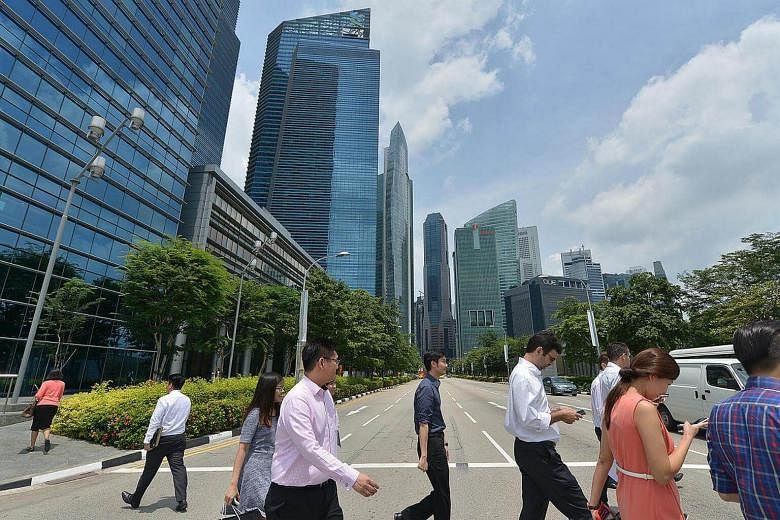SINGAPORE - Rising proportion of female participation and a steady proportion of males in the labour force led to an upward trend in the labour force participation rate (LFPR) in the last five years, a report released on Wednesday (Nov 30) by Manpower Ministry stated.
However, unemployment numbers rose and real median income growth moderated in 2016, amid weaker economic environment, the report added.
The findings were based on data from Comprehensive Labour Force Survey conducted in mid-2016 by the Manpower Research and Statistics Department of Manpower Ministry.
The LFPR declined slightly (68.0 per cent) in 2016 compared to 2015 (68.3 per cent) when it had risen sharply due to one-off policies.
Female participation in the labour force was promising with its uptrend from 57 per cent in 2011 to 60.4 per cent in 2016, while it increased slightly for males at 76.2 in 2016 from 75.6 in 2011.
The increase in female participation was "largely due to flexible work arrangements (FWA) which are now offered by more companies," said Mr Ian Grundy, head of marketing and communications at Adecco Asia Pacific.

Now 77 per cent of establishments provide ad-hoc FWA to employees, while there are more employees working in establishments which provide ad-hoc FWAs - from 76 per cent in 2015 to 82 per cent in 2016.
"Companies could look into more flexible workforce in terms of contract workers, part-time, temporary and also flexible work arrangements which include providing non-statutory leave benefits," Mr Grundy said.
Unemployment rate was broadly stable from 2012 to 2015, in the seasonally adjusted range of 2.6 per cent to 2.9 per cent, as the increase for males was balanced by the decline for females. However, both male and female unemployment rates rose from 2015 to 2016 amid the weaker economic environment.
Over the same period, the overall resident unemployment rate rose from 2.8 per cent to 3.0 per cent. Those between 25 and 64 years of age, the employment rate was 80.3 per cent in 2016 compared to 80.5 per cent in 2015.
Growth in employment rate among older males aged 55 to 64 was flat while incidences of discouraged workers remained low, the release added.
Wage pressures have also eased in the latest year. Year-on-year, the nominal median monthly income, including employer CPF contributions, of full-time workers rose by 2.7 per cent to S$4,056 in June 2016.


